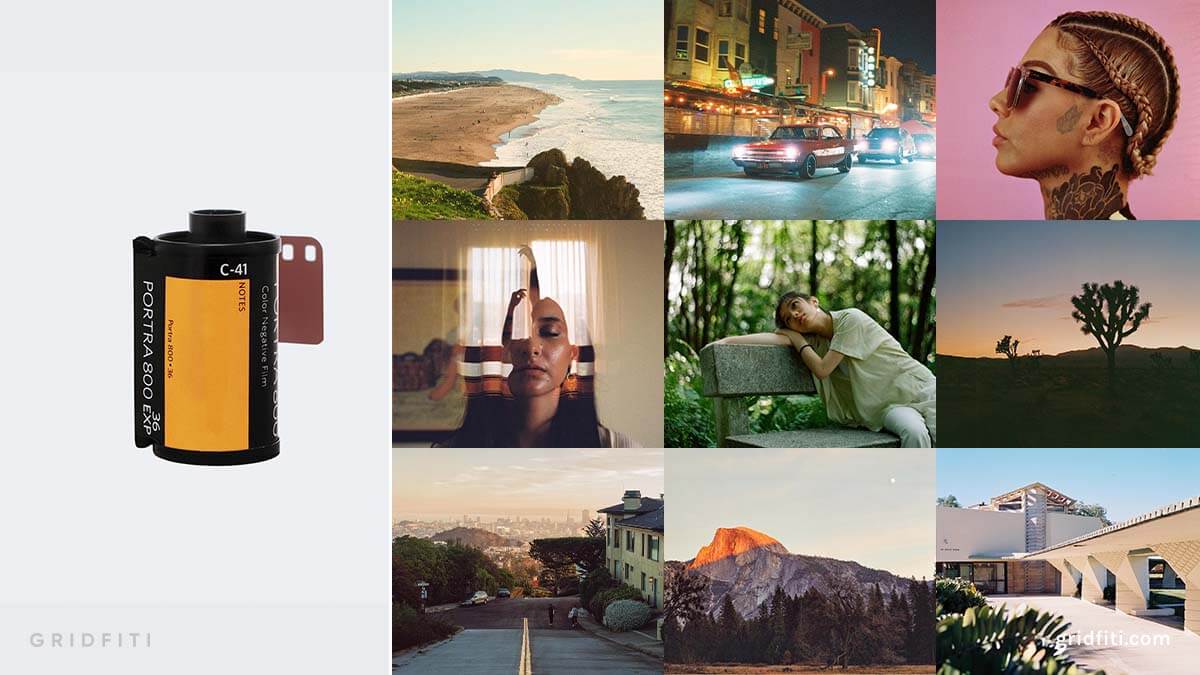800 speed film is often referred to as film thats meant for low light – but the fact of the matter is that 800 ISO works for all settings!
Depending on the film stock, you can achieve quite a balanced look in photos whether you’re shooting 800 speed in the light of day, or the dark of night. Some notable 800 ISO features include fine grain that really only comes out in low light photos, the ability to shoot in lighting of all kinds, and being able to up the shutter speed to achieve sharp shots.
Two 800 speed films that come to mind are Lomography and Kodak Portra’s offerings. Both different types of film that achieve unique looks in their own right, but which are the ones we’d recommend? Check out the differences between Lomo 800 vs Portra 800 film.
Want more tips on film stocks? Join our mailing list!
Lomography 800
In a world of rising film stock prices, Lomography shines a glimmer of hope as an affordable alternative to Kodak’s pricey Portra 800 film.
Lomography (or Lomo) 800 is fairly more saturated than Portra 800, with noticeably more contrast to its photos. Shadows and edges appear darker, and as a result, sharper. You’ll also notice deep blue hues and warm oranges in this stock depending on your lighting.
The grain really comes out when metering at box speed (aka the manufacturer’s recommendation, in this case, 800) and when shooting in low light – but is still manageable and not overbearing. Many photographers like to meter Lomo 800 1-2 stops overexposed at 640 or 400 as well, which reduces grain in images (just like Portra 800).
Its 800 speed provides the ability to shoot at higher shutter speeds. Shooting action? Sports? Animals? Vehicles? 800 ISO will let you capture that – while mitigating any motion blur you may have otherwise gotten from lower ISO film stocks.
Check out Lomography 800:
- Lomography 800 35mm Film: Get it on Amazon
- Lomography 800 Medium Format (120) Film: Get it on Amazon
 Images by @30mileswest, @isaacmacieira, @lomographyuk, @memphis.mayne, @kjtcasual, @spiffyphotography, @monimonnni, @bnsmona, @pentax_chris
Images by @30mileswest, @isaacmacieira, @lomographyuk, @memphis.mayne, @kjtcasual, @spiffyphotography, @monimonnni, @bnsmona, @pentax_chris
Kodak Portra 800
Portra is known for its balance of warm saturation with punchy tones – you’ll also find that shadows aren’t overly contrasted. Grain is often a concern with higher speed film stocks, but Portra 800 photos in daylight often show no signs of grain. It’s really the low light settings where the grain becomes evident.
Portra made a name for itself due to its exposure latitude, which refers to how forgiving the film can be in under or overexposed scenarios. Photographers like to meter Portra a few stops over, so for example, setting the meter to expose for 400 ISO or 640 ISO (which are 1-2 stops below Portra 800). What does overexposing Portra do? It pretty much guarantees that your shot will absorb a slight bit more light than the metering requires, resulting in a brighter image free of grain and faded colors. Metering it at box speed works too, but grain is more pronounced in darker images.
The biggest pro of Portra 800 over its 160 and 400 counterparts is, once again, the ability to shoot at higher shutter speeds to avoid any motion blur – making it a great stock to capture action and movement as sharply as possible.
The main downside to Portra is its increase in popularity in recent years – and ultimately, price. This is one of Lomo 800’s biggest advantages over Portra.
Check out Kodak Portra 800:
- Porta 800 35mm Film: Get it on Amazon | Get it on Moment
- Portra 800 Medium Format (120) Film: Get it on Amazon | Get it on Moment

Which of these two film stocks do you prefer? Let us know in the comments below, and tag us in your Portra or Lomo shots on Instagram @gridfiti!
Gridfiti is supported by its audience – when you buy something using the retail links in our posts, we may earn a small commission at no additional cost to you. Read more about our affiliate disclaimer.